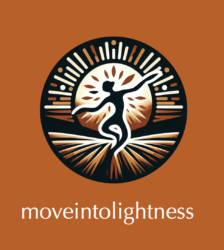Introduction
When it comes to mastering dance techniques, many dancers make the critical mistake of focusing solely on steps and choreography, overlooking a vital component: the nervous system. This oversight can impede progress and lead to frustration. Let’s delve into how ignoring your nervous system impacts your dance moves and explore how integrating reflexes and BrainDance can transform your performance into a smooth, effortless display on the dance floor.
The Importance of the Nervous System in Dance
Understanding the Connection
The nervous system is the control center for all bodily functions, including movement, balance, coordination, and rhythm. In dance, it plays a crucial role in how effectively and efficiently your body responds to musical cues and physical demands. Ignoring the nervous system’s role can lead to several issues:
- Poor Coordination: Without proper integration of the nervous system, your movements can become disjointed and awkward.
- Inconsistent Rhythm: Difficulty in synchronizing with the music often stems from a nervous system that isn’t fully attuned to auditory cues.
- Increased Anxiety: A poorly regulated nervous system can lead to performance anxiety, making it harder to relax and enjoy dancing.
- Higher Risk of Injury: Lack of coordination and body awareness can increase the risk of injuries due to improper technique and alignment.
How Integrating Reflexes Enhances Performance
Calming the Nervous System
Integrating reflexes through techniques such as MNRI (Masgutova Neurosensorimotor Reflex Integration) helps calm the nervous system, allowing for more controlled and fluid movements. Here’s how:
- Improved Rhythm and Musicality: Reflex integration boosts your innate ability to hear and interpret sounds, making it easier to follow different rhythms. When your body processes auditory information efficiently, your movements align more naturally with the music.
- Enhanced Coordination: By integrating reflexes, your nervous system operates more smoothly, improving coordination and balance. This leads to movements that are more synchronized and effortless.
- Reduced Anxiety: Reflex integration promotes a state of calm by regulating the nervous system. This reduces performance anxiety, allowing you to focus on your dance moves rather than worrying about making mistakes.
The Role of BrainDance in Efficient Movement
Effortless and Graceful Dancing
BrainDance, a series of movement patterns based on the fundamental movements of an infant’s first year of life, helps rewire the brain and body for more efficient movement. Here’s how BrainDance contributes to a better dance performance:
- Increased Body Awareness: By revisiting foundational movements, BrainDance enhances your understanding of how different parts of your body work together. This increased awareness translates to more fluid and controlled dance movements.
- Natural Movement Patterns: BrainDance encourages the use of natural movement patterns, making your dance movements more efficient and reducing the energy expenditure required for complex sequences.
- Enhanced Expressivity: BrainDance helps develop expressiveness in your movements. This not only improves technical skills but also adds emotional depth to your dance, making performances more impactful.
Realizing a Smooth, Effortless Performance
Transforming Your Dance Experience
By focusing on integrating reflexes and practicing BrainDance, you can achieve a smooth and effortless dance performance. Here are the specific benefits you can expect:
- Natural Rhythm and Flow: With an attuned nervous system, your body will naturally align with the rhythm, allowing you to dance with confidence and ease.
- Seamless Coordination: Improved coordination ensures that your movements are synchronized and fluid, making even complex dance routines appear effortless.
- Calm and Focused Presence: A calm nervous system reduces anxiety, enabling you to stay focused and present during performances.
Conclusion
Embrace the Power of Your Nervous System
The big misstep of ignoring your nervous system’s role in mastering dance techniques can hold you back from reaching your full potential. By integrating reflexes and practicing BrainDance, you can calm your nervous system, enhance coordination, and achieve a smooth, effortless performance on the dance floor. At moveintolightness, we’re here to guide you through this transformative journey. Embrace the power of your nervous system and watch your dance skills soar.
